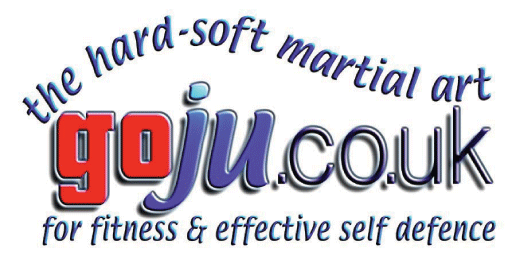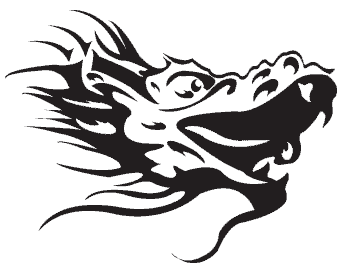Warning:
If you perform any technique shown here in class or in public, you do so at your own risk.
We assume no responsibility for the use or misuse of the information provided which results in injury or loss.
Copyright: Tom Hill 2012 Goju.co.uk All rights reserved.
UPDATED 1st AUG 2020





What is a dantian? Traditionally, a dantian is considered to be a center of qi or life force energy. The dantians are important points of reference in Neidan, Qigong, Neigong, Tao yin and other self-cultivation practices of exercise, breathing, and meditation.
To the beginner, this center can be hard to imagine or to feel, but it is essential that the Karate student from the start tries to stimulate his or her ki and their sense of center. Tanden is the endless source of ki, from which it comes and to which it flows. The more you focus on your ki flow, the clearer you sense your center, and the more you focus on your center, the stronger your ki flow gets.
To use one's center properly, it should also be the center breathing. Breathing is done by the lungs, but there are different techniques of inhaling and exhaling. The one used in Karate and all budo is what by western terminology terms diaphragm breathing, often called belly breathing. It feels like you are breathing with your belly. This is partly because of the effect of the 'diaphram' a band of muscle beneath your lungs that helps draw air into your lungs.
Abdominal breathing is the way to start, by trying to breathe into and out of the Tanden. Focused belly breathing is easy enough to see, the belly is moving, but not the chest. This is most evident in Sanchin and Tenshio Kata. Students can find it more difficult to do than to observe. Good posture is required in order to learn a deep belly breathing. That's why it is difficult to do in an armchair, where the posture tends to be slumped and bent. Kneeling in seiza, works better. In this position the back is straight. The lower dantian is particularly important as the focal point of breathing technique as well as the center of balance and gravity.
The Taoist concept of dantians as energy centers is similar to the Indian yoga concept of chakras as key points through where Prana or Chi is stored. Many traditions consider the dantiens and the chakras to be separate, albeit cooperative energetic mechanisms.Taoist and Buddhist teachers often instruct their students to center the mind in the navel or lower dantian. This is believed to aid control of thoughts and emotions. Acting from the dantian is considered to be related to higher states of awareness or samadhi. Indian tradition mentions seven main chakra. These are points of power in man's body, from the groin up to the top of the head. Chakra really means 'wheel' and each of them has its own characteristics. Tanden is the second point from below in this scheme of things, with the Indian name Svadhisthana.
Tanden
(The Center or Dantian in Chinese)
We need to be receptive of our inner center, our inner certainty, to be able to do the Karate movements as easily as if we had invented them ourselves. If we can't feel this instinct for what is the correct technique and delivery, then we're on the wrong track and perseverance can't compensate for it. Practising incorrectly only makes you better at doing the technique incorrectly.
Man's inner root in the Kata is his center. It is called tanden in Japanese (dantian in Chinese). It is also called Seika no itten, Seika tanden or Kikai tanden. It is located inside the body, in the middle of it, approximately three finger widths down from the navel or bellybutton. It is also the center of gravity of the body.
The Chinese or Japanese kanji for the center mean 'the red rice field'. Rice is the prime staple in that part of the world and it is a symbol of life energy. A whole red field of it expresses a vast amount of powerful life energy. Kikai means 'Ocean of ki', tanden is therefore an ocean of ki in your center.
Seika means 'below the navel', so seika tanden specifies which center it is, since some Eastern traditions have several. Seika no itten means 'the one point below the navel', stressing the importance of always sticking to it, making it the center of one's actions. The Indian word svadhisthana can be translated to 'The dwelling of the Self'.
In Karate, as in most traditional martial arts it is the tanden, the center that is most important. You have to find, develop and express your center in all the Kata. It is true about all budo, not just Karate. The center is more than just a center of balance, or the focus point of your breathing. It is an internal fail-safe compass, the birthplace of all martial techniques and of one's own expression of the art. You need to be true to your center. Then the rest of the progress in your 'Do', (the path of your self-realization) - your way), without it, you are unable to go beyond the mere punch kick boundary.
It is from the center that the Karate techniques emerge, as if born from it. The essence of the techniques is the relationship between the center of tori, (the defender), and uke, (the attacker). To regard Karate without Tanden is to limit development of it, nothing is more important in Karate, than working with one's center.
To complete a circle, you must have a center. Techniques are born in the center and spring from the center.


























